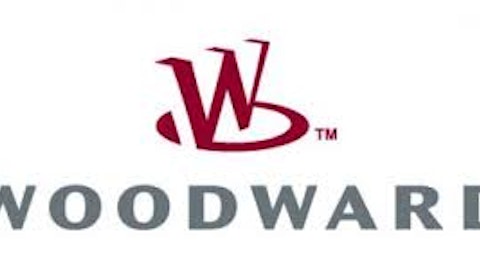Our consolidated full year financials are shown on Slide 5. For the full year, total revenue increased 3% to $320 million. As you will recall, 2013 results do include the $10.6 million gain on sale of the Pacific North West operations. If we exclude the gain on sale of the Pacific Northwest, and we also exclude the contribution that we received from Banyan in 2014, full year revenue increased 5%. Total operating expenses excluding the impact of Banyan and the one-time expenses, were down 1% year-over-year. That resulted in core operating leverage of approximately 600 basis points. Slide 6, looks at our spread and fee-based revenue, and we show the progress that we have made in drawing our fee-based revenue. Our fee-based revenue increased 18% linked quarter and 21% year-over-year, largely due to the Banyan acquisition. As Clay mentioned, our fee-based revenue now accounts for 47% of total revenue. That’s up from 43% in the third quarter of 2014, and 42% in the fourth quarter of 2013.
We believe we have a large stable source of recurring revenue derived from distinctive private banking clients that sets us apart in the industry and enables us to grow in a more capital friendly manner. On Slide 7, our net interest margin decreased 10 basis points to 2.83% linked quarter. And that is primarily due to higher cash balances, some lower loan yields, and the lower levels of interest recapture in the fourth quarter versus the third quarter.
On Slide 8, we show the decline on criticized loans for the past five quarters. In the fourth quarter of 2014, criticized loans fell 11% linked quarter to a $160 million. We did have a $10 million increased in our non-accruals, and that partially drove the $2.4 million provision expense during the quarter. On slide 9, our Tier-1 common equity capital decreased an estimated 87 basis points to roughly 9.8% and that is due to the $65 million of goodwill and intangibles created in the Banyan transaction. As we disclosed last quarter, approximately 68% of the up-front consideration was paid in cash. That concludes my prepared remarks for the morning. I will now turn it over to Mark for discussion in the private banking segment. Mark?
Mark Thompson, Chief Executive Officer, Boston Private Bank
Okay. Thanks Dave good morning. Before I begin my comments, I would like to highlight that we have changed the reporting format for the private bank. Going forward, the private bank segment will include financial information for our traditional lending and deposit taking activities. Well the Boston Private Wealth Management segment will include the financial information for the combined Banyan and Legacy Wealth Management and Trust businesses. My comments will begin on Slide 10. In the fourth quarter, pretax, pre-provision income at the private bank decreased 6% year-over-year due to a 4% decrease in revenue to $46.5 million and a 2% decline in total expenses. Included in the fourth quarter results are $1.4 million of one-time expenses. Excluding this one-time items, pretax, pre-provision income increased 2% from the fourth quarter of 2013.
Slide 11 shows full year private banking performance highlights. Revenue decreased 4% as higher net interest income up 3% from 2013 was offset by lower fee and other income. As Dave mentioned earlier, 2013 results include the gain on sale of the Pacific Northwest operations. Excluding this gain, total revenue increased 2% while total expenses excluding one-time items fell 7% for the same period. Slide 12 shows the past five quarters of average loan balances by type. Total average loan, loans increased 5% year-over-year, in line with our previously stated growth objectives. The strong year-over-year performance was driven by a 5% increase in both commercial and residential loans. Within commercial, and the period, C&I loans increased 10%. C&I grew $68 million in New England an increase of 10 % and $19 million on the west coast an increase of 12%. At the individual market level, loans grew 7% year-over-year in Southern California and 4% in New England. Loans decreased 2% in the San Francisco Bay Area due in large part to the loan sale we executed in the second quarter of 2014.





